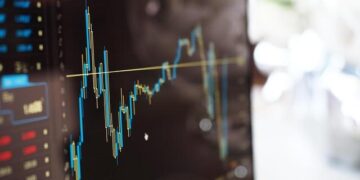Rethinking Economic Measurement: A New Perspective
Introduction to Economic Metrics
The traditional yardsticks for gauging economic health, such as Gross Domestic Product (GDP), have long been the gold standard. However, the evolving landscape of global economies prompts a reassessment of these metrics. In our pursuit of a more accurate representation of well-being and prosperity, it is crucial to consider alternative measurements that capture a broader spectrum of societal progress.
Limitations of GDP
While GDP provides invaluable insights into overall economic activity by measuring the total value of all goods and services produced in a country during a specific period, its limitations are increasingly evident. For instance, it fails to account for income inequality or environmental degradation — two critical factors that significantly influence quality of life. Current statistics show that wealth concentration has reached unprecedented levels; according to recent reports from Oxfam, the richest 1% now own more than 44% of global wealth.
Emerging Alternatives to Traditional Metrics
To address these shortcomings, economists and policymakers are exploring innovative alternatives. One promising approach is the incorporation of measures such as the Human Development Index (HDI), which evaluates factors like education level and life expectancy alongside economic output. Another noteworthy example is Bhutan’s Gross National Happiness Index (GNH), which prioritizes citizen well-being over mere financial gain.
Statistical Insights
Recent surveys conducted by various organizations indicate that nearly 60% of people believe governments should utilize measures beyond GDP to determine national progress. Furthermore, countries like New Zealand have already begun implementing “Wellbeing Budgets,” focusing on enhancing citizens’ welfare rather than solely boosting economic growth figures.
The Role of Technology in Economic Assessment
Technological advancements also play an essential role in redefining how we perceive and measure our economies. Big data analytics allows for real-time monitoring and analysis across diverse sectors—leading to valuable insights into consumer behavior patterns that traditional metrics may overlook.
Real-World Applications
For instance, leading companies such as Amazon leverage data analytics not only for sales forecasts but also to predict future market trends based on customer preferences—demonstrating how nuanced understanding can provide benefits extending far beyond conventional economic indicators.
Conclusion: A Path Forward
As our societies continue evolving rapidly with technological advancements and shifting social values, there’s increasing momentum toward redefining what constitutes an effective measurement system for evaluating economic success. By advocating for methodologies that incorporate human welfare alongside financial metrics—or even replace them altogether—we pave the way towards sustainable development policies capable of serving society holistically rather than fragmentarily.
while traditional methods like GDP have served us up until now as useful tools for assessing economics at scale; embracing new paradigms will enable better-informed decision-making rooted in genuine human advancement and environmental sustainability amidst today’s challenges—a need direly pressing in this age marked by inflationary pressures and complex socioeconomic dynamics.






























